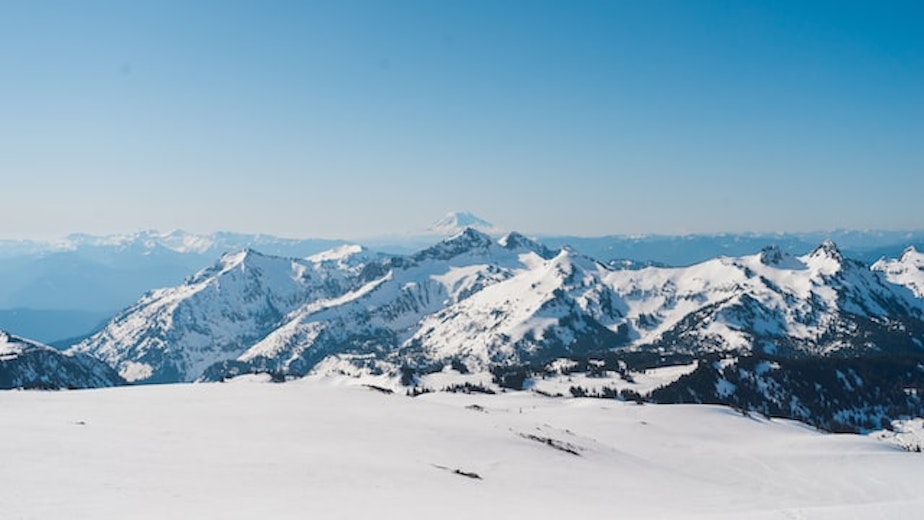The Abstract: Why is some of our snow turning pink?

How do bacteria communicate? And what's the deal with pink snow? Soundside spoke with two researchers exploring the worlds of bacteria and algae to gather some insight.
Peter Greenberg is a professor of microbiology at the University of Washington; for decades, he's been eavesdropping on bacteria.
Greenberg's initial research was on marine bacteria, which would only luminesce once their population reached a certain density. That need for community eventually led Greenberg and his colleagues to name the phenomenon "quorum sensing."
Today, Greenberg's research is focused on pseudomonas, a virulent bacteria that can cause serious infections in people with cystic fibrosis. Other colleagues in his lab are also looking at how they can encourage or halt bacteria coming together by disrupting the signaling system between them, which could be a novel way to treat infections without the use of antibiotics.
But Greenberg also said there's lots to learn about the basic science of bacterial communication before rushing to develop potential medicines.
"I'm pushing further the basic science to make sure that we're still not off course," he said.
Sponsored
For his work in pioneering research into bacterial communication, Greenberg recently received the 2023 Canada Gairdner International Award.
You can read more about Peter Greenberg and his lab's work at the University of Washington here.
Why is snow turning pink?
"There's a group of algae that have adapted to live in the snow habitat," said Robin Kodner, a lead scientists for the Living Snow Project at Western Washington University. "But they only start to grow in the springtime, when there's a lot of water saturating the snowpack."
Kodner said there are microbes living in snow all the time, but the algae causing the pink coloration on snow throughout the alpine regions of the state are unique. One hypothesis is that algae spores sit on soil surfaces, rocks, or ice, and in the winter months transform into swimming cells that can then settle on the surface of snow.
Sponsored
The good news for humans is that a pink snow bloom is not toxic, unlike green algae blooms on larger bodies of water downstream.
"They're actually pretty closely related to the types of algae that we sometimes put in smoothies," Kodner said.
But pink snow is causing other problems. The natural whiteness of snow reflects the sun, but a darker algae bloom on the surface is absorbing more solar radiation, and accelerating snow melt. That's an issue for glaciers, especially, which are at risk of severe melting throughout Washington state.
Kodner and the Living Snow Project are documenting cases and collecting samples of pink snow from Washington and around the world. The team is then sequencing the DNA of those samples to determine what other organisms are living with the algae, and to trace the different algae communities over space and time.
Kodner said volunteers can help with that work by reporting locations of pink snow using the Living Snow Project's website or mobile app. The public can also request collection kits and drop off samples at various locations throughout the state.
Sponsored
Listen to the full segment by clicking play on the audio above.





